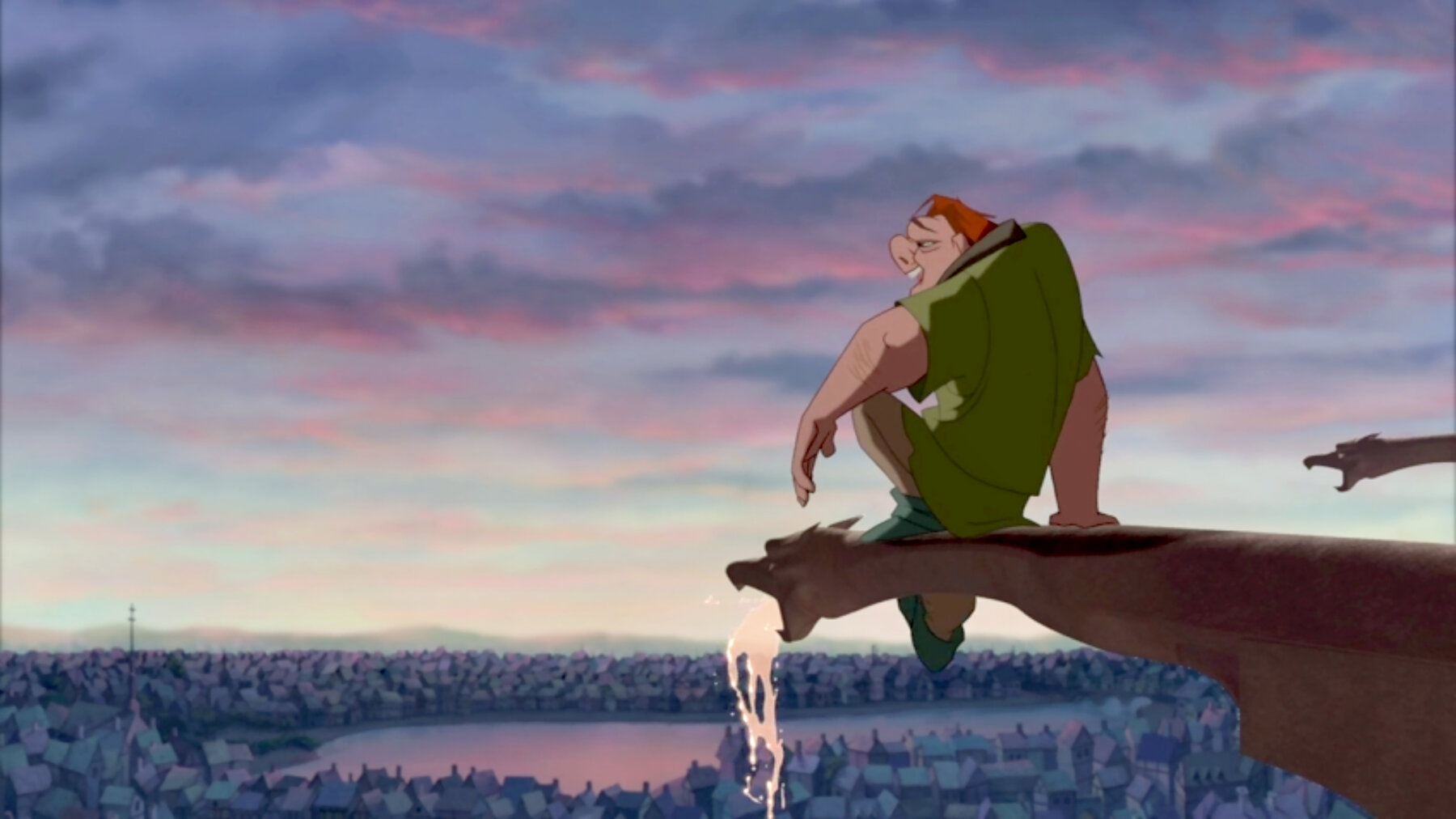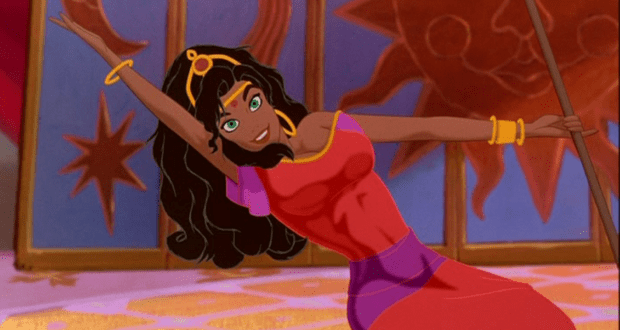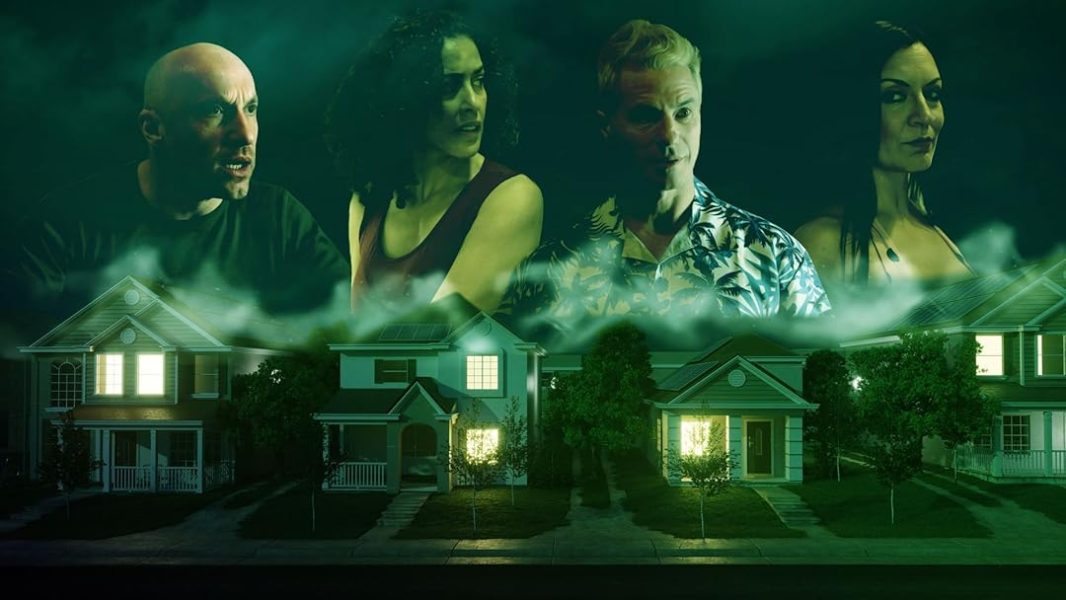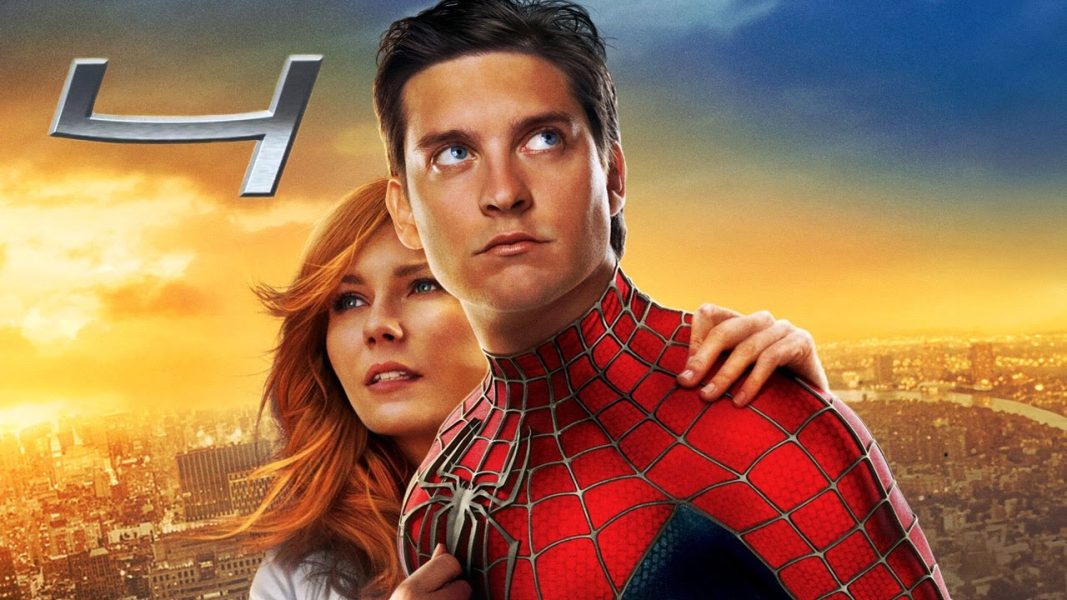The Hunchback of Notre Dame (1996)—Dark, Gothic and Disney

Loosely based on the 1831 novel of the same name, Disney’s The Hunchback of Notre Dame is often glossed over when discussing Disney film adaptations. To those who have seen it, this film feels like a historical relic lost to time. Unlike most of Disney’s more well-known films and properties, The Hunchback of Notre Dame is one of their darkest and most mature films that honestly doesn’t get enough attention.
In Paris, the Romani are fleeing from the French government led by Judge Claude Frollo (voiced by Tony Jay). He chases down and kills a woman, who was carrying a baby. Frollo is about to kill the child, but is stopped by the clergy of Notre Dame who force him to raise the child as his own. Twenty years pass and the child, Quasimodo (voiced by Tom Hulce), is grown up and is tasked with ringing the bells of Notre Dame. While he is grateful to Frollo for raising him, he yearns to be let out to explore the world. One day, Quasimodo sneaks out to attend the Feast of Fools when he runs into a Romani woman: Esmeralda (voiced by Demi Moore). He quickly becomes smitten with after she was the only one who showed him an ounce of kindness and helps her hide from Frollo. However, Frollo is bent on not only finding Esmeralda, but also snuffing out all of the Romani in Paris.

The Hunchback of Notre Dame is one of the heaviest films Disney has made that tackles the real life issue of the abuse of power and government corruption. Judge Frollo is a high ranking government official who abuses his power to see his own goals prosper, that being eliminating the Romani by all means, as he sees them as pests. To do this, he goes to extreme lengths, such as using the Church to do his bidding and even mobilizing the Parisian army. As his hatred for the Romani festers, his lust for Esmeralda grows from this hatred. He hates her because he cannot have her as his own. Knowing that he is attracted to the very thing he despises, he sings “Hellfire” in front of a fire place while caressing her scarf. This musical sequence is perhaps one of the darkest I’ve seen in a Disney film, as it displays horrifying shadowy figures in robes, a menacing choral backing and references to the flames of Hell, lust, desire and sin. All this has me believe that Frollo is one of the most terrifying Disney villains, not because of his physical strength, but because he is a corrupt government official who would use his power to do whatever he wants. And the world has way too many of his kind.

Unlike many of Disney’s other ventures, The Hunchback of Notre Dame truly feels like a cinematic piece of art. The wide shots of the city and of Notre Dame coupled with the orchestral and choral backing gives the film this extremely epic quality that is seemingly lost in Disney’s modern filmography. I can’t help but get chills whenever I hear the Gothic soundtrack! Some of my favorite shots include the bird-eye shots of the city of Paris. Not only does it give the film more gravitas, but also is extremely effective at building tension, especially during the scenes where Quasimodo helps Esmeralda escape Notre Dame and during the third act when Quasimodo and his gargoyle friends defend the cathedral from Frollo and his soldiers. But besides the soundtrack and cinematography, the attention to detail is simply immaculate! You can see every detail on Notre Dame, from the flying buttresses on the outside, to the pointed arches within the Cathedral. Even in Disney’s modern CGI films, I haven’t seen such an attention to detail!

Although I haven’t read the original source material, I’m well aware of the differences. For example, Esmeralda is only sixteen in the novel, whereas she is portrayed to be in her twenties in the film. Additionally, Captain Phoebus was not the charming and righteous knight in shining armor, rather he was a rather sleazy scumbag who only wanted to sleep with Esmeralda. Also unlike the original, the film adaptation has a much happier ending, with the people accepting Quasimodo for his heroic deeds and kind heart. Do these changes make the film any worse? Not to me they don’t.
The only thing that I felt bogged the film down was Quasimodo’s gargoyle friends. Throughout the film, I was always under the impression that their personalities were all in his imagination, which would make sense considering that he has no one to talk to up in the bell tower. He even gives the bells themselves different names to help cope with his loneliness. Whenever it would cut to someone interrupting his conversation with his gargoyle friends, we as the audience see that they are inanimate objects, seemingly further cementing my observation. However, during the third act, it turns out that they were alive the whole time, as they help Quasimodo defend Notre Dame in rather comical ways. At this point in the film, I felt like Disney tried to make Beauty and the Beast when the servants defend the castle from Gaston and the villagers.

Besides the obvious theme of kindness is what makes a person a human, one of the most important, yet overlooked messages of the film is how to handle rejection. Unlike not only most Disney films, but films in general, our protagonist doesn’t end up with the girl. Rather, it is Captain Phoebus who ends up with Esmeralda. Instead of feeling jealous or hatred, Quasimodo ends up respecting their relationship and opts to remain friends with Esmeralda, despite his feelings for her. This is a lesson I think many people should learn as it will take them far, as rejection is part of life. When I first watched this film, I felt that Esmeralda ending up with Phoebus was counterproductive to the main message the film was trying to convey. However, upon further analysis, I realize why she would love Phoebus. Unlike Quasimodo, who treated her like an angel sent from heaven, Phoebus treats her as an actual person.
Not many Disney films truly try to deviate from what they typically are known for, but The Hunchback of Notre Dame proves to be one of Disney’s darkest and most mature films. Tackling the issues of corruption within the government, heavy religious themes and the persecution of the Romani, this film is truly ahead of its time. However, I would’ve wished Disney went all in on its maturity instead of trying to squeeze in comic relief with the gargoyles. Despite this, I am still happy with what we got. The visuals, cinematography, music and story were more than enough to make up for the few lackluster elements of the film. Films like The Hunchback of Notre Dame and Satoshi Kon’s Perfect Blue to name a few prove that animated films are not just mediums for kids, they can be so much more. And while Disney films today prioritize strong messages of community, family and kindness, none quite reach the level of this Disney cult classic.









